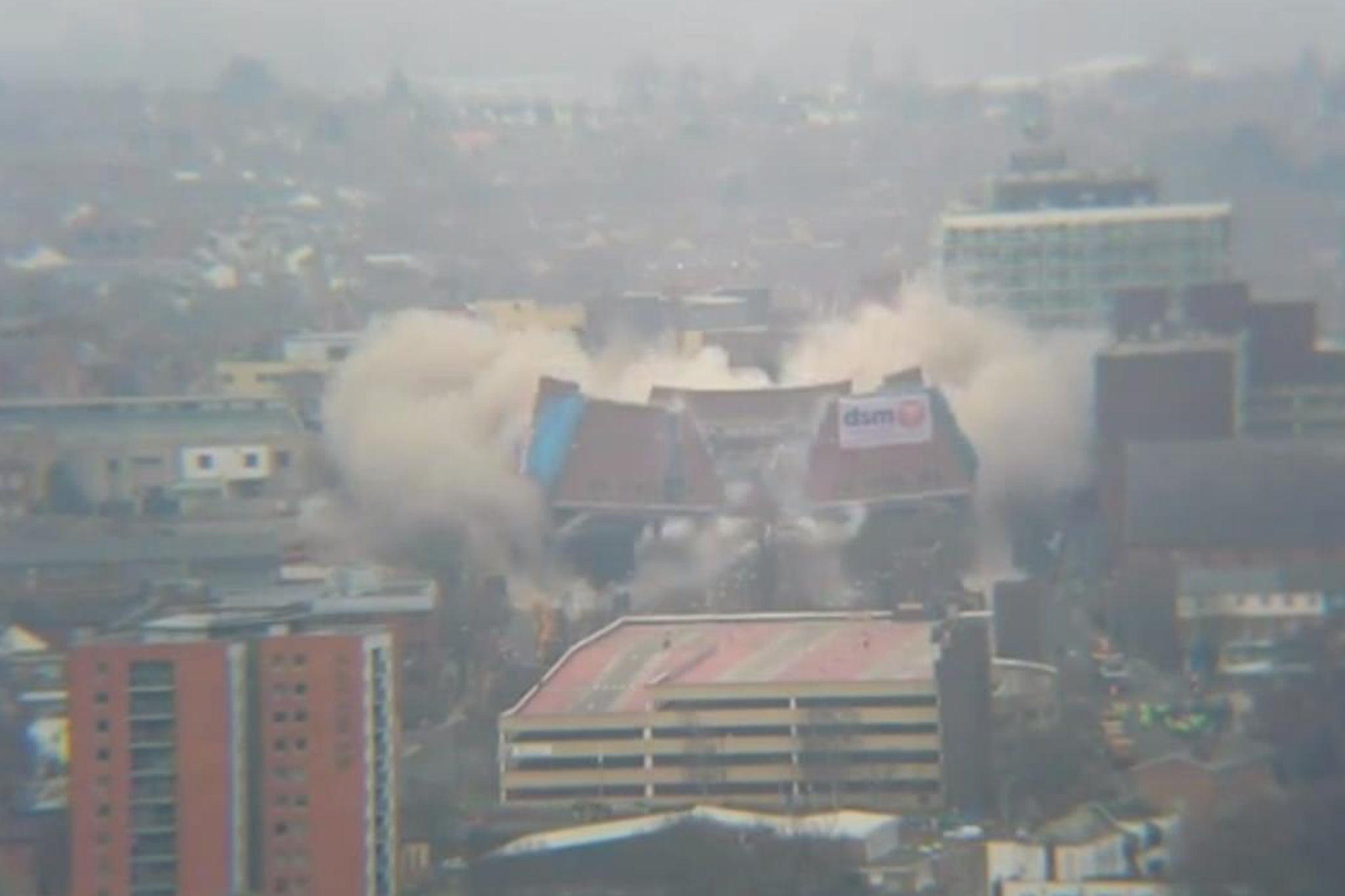Northampton Greyfriars: Watch one of the Britain's starkest examples of Brutalist architecture as it is demolished
Will the quality of the shopping and leisure centre that Northampton council plans to build on the four acre site be any better than the bus station?

Your support helps us to tell the story
From reproductive rights to climate change to Big Tech, The Independent is on the ground when the story is developing. Whether it's investigating the financials of Elon Musk's pro-Trump PAC or producing our latest documentary, 'The A Word', which shines a light on the American women fighting for reproductive rights, we know how important it is to parse out the facts from the messaging.
At such a critical moment in US history, we need reporters on the ground. Your donation allows us to keep sending journalists to speak to both sides of the story.
The Independent is trusted by Americans across the entire political spectrum. And unlike many other quality news outlets, we choose not to lock Americans out of our reporting and analysis with paywalls. We believe quality journalism should be available to everyone, paid for by those who can afford it.
Your support makes all the difference.One of Britain’s starkest examples of Brutalist architecture died a suitably brutal death as 2,200 small, precisely placed charges ignited in a dull roar, bringing down in ten seconds Northampton’s 175m long Greyfriars bus station.
The building had been a horribly expensive functional disaster from the moment it opened in 1976, and was costing the council £500,000 a year to maintain.
Greyfriars was the ugly flipside of Brutalist design, which first surfaced in the 1960s as a visceral, and sometimes brilliantly original protest against the increasing colonisation of towns and cities with clean-lined, characterless modernist architecture.
Brutalism produced deliberately tough-looking buildings in roughly surfaced concrete, and brick. Sometimes, the results were magnificent: London’s National Theatre, for example, designed by Sir Denys Lasdun, and the vast, sculpted balconies of Preston bus station, by Arup and BDP.
But Greyfriars bus station was indescribable, a hugely anonymous building designed by Arup Associates, who were regarded in the 1970s as a small but frightfully clever practice.
And they were, but in this case their design was more fright than clever, and was described in the Pevsner guide – the bible of British buildings – as “a ghastly trapezoid”. It was as if a brilliant, savagely functional architectural sketch had morphed into the Incredible Urban Hulk.
It’s cost was ghastly, too: £50m in today’s money. The bus station, with a carpark and three storey office segment above its two gaping bus maws, was designed to attract people to the linked Grosvenor shopping centre. Lifts failed a week after it opened, disabled people found it difficult to use, and within a year mineral stalactites began forming on the ceilings of underpasses leading to the bus station.
It’s easy to criticise such a blatantly benighted chunk of architecture. But the 39-year-old rubble of the Greyfriars bus station, which will take three months to clear away, is thought-provoking. Brutalist buildings were deliberately provocative, designed to make people experience places and activities in a new way. Some found it pretentiously ugly, but there was certainly an original, anti-establishment, anti-corporate intention at work.
How many of the conveyor-belt of “landmark” and “iconic” mixed-use developments that continue to spring up in our towns and cities can be described as good architecture, or as contributing anything more meaningful to daily life than skinny lattes and shopping?
As people returned to the 414 homes and shops in the temporary exclusion zone around the rubble of the bus station, another question loomed. Will the quality of the shopping and leisure centre that Northampton council plans to build on the four acre site be any better, in terms of placemaking quality, than the bus station? It’s more than possible that what replaces the bus station, as part of the Northampton Alive regeneration programme, will be just as brutal, but in a different way.
Join our commenting forum
Join thought-provoking conversations, follow other Independent readers and see their replies
Comments